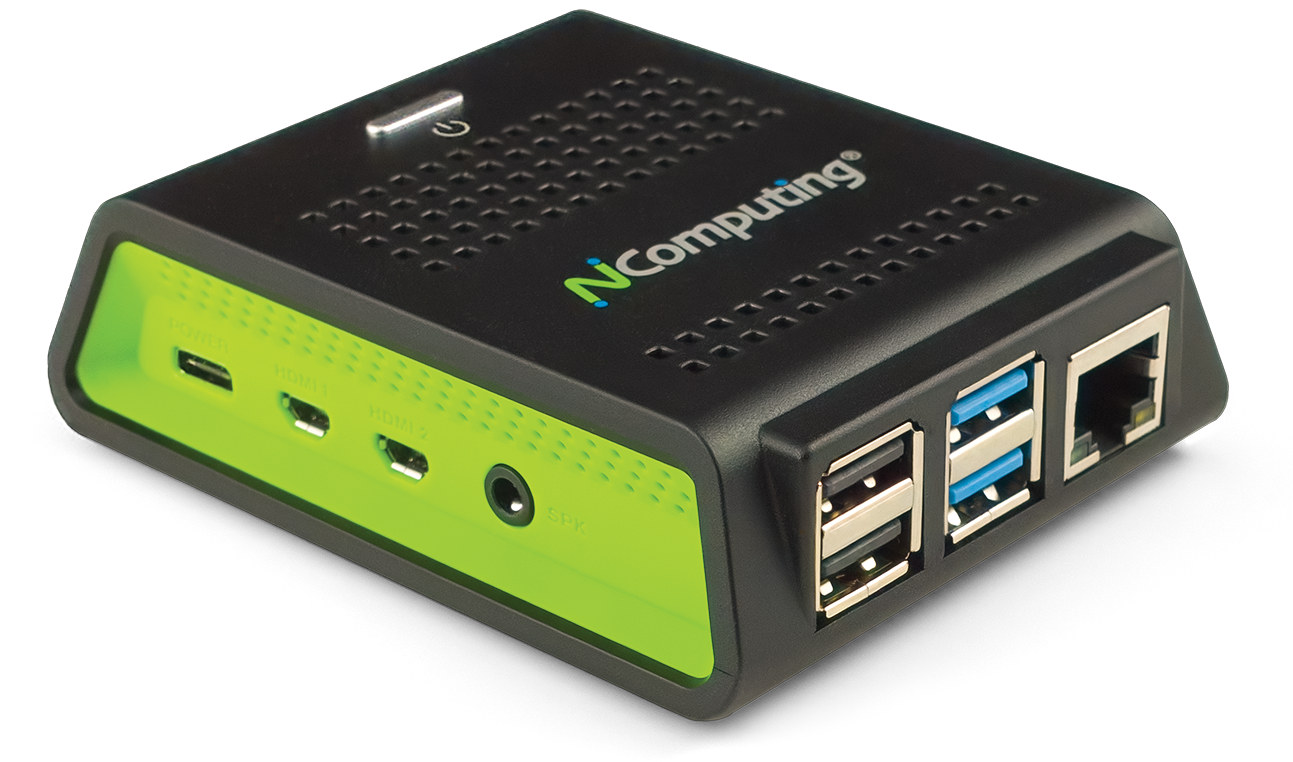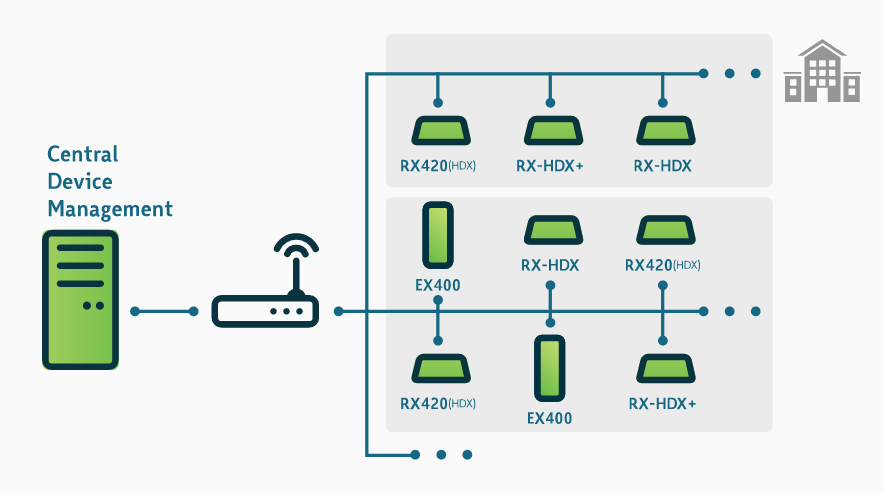NComputing RX300 Raspberry Pi 3 thin client was launched in 2017 with support for the company’ vSpace Pro desktop virtualization solution for Linux and Windows, and I tested it accessing a Windows Server 2006 host located in Singapore, and performance was pretty good for a remote system as I could play 1080p YouTube videos, browse multiple tabs in Chrome, etc.. relatively smoothly. This type of solution is aimed at businesses, for which it may be easier and cheaper to handle a fleet of devices using thin clients and servers, instead of traditional PC’s.
Beside its vSpace Pro RX300 thin client, NComputing also introduced another Raspberry Pi 3 thin client that same year with RX-HDX using a design similar to RX300 but instead integrating support for Citrix HDX virtualization technology. NComputing now unveiled an update for the latter with RX420(HDX) thin client based on Raspberry Pi 4 SBC with 2GB RAM.

Specifications:
- SoC – Broadcom BCM2711 quad-core Cortex-A72 @ 1.5GHz with VideoCore VI GPU supporting OpenGL ES 3.0 graphics
- System Memory – 2GB LPDDR4
- Storage – 16GB MicroSD card
- Video Output – 2x micro HDMI ports up to 4K @ 60 Hz
- Video
- Decode – H.265 up to 4Kp60, H.264 up to 1080p60
- Encode – H.264 up to 1080p30
- Audio – Stereo audio via 3.5mm audio jack, digital audio via HDMI ports
- Connectivity
- Gigabit Ethernet (RJ45)
- Dual-band (2.4 GHz/5.0 GHz) 802.11b/g/n/ac WiFi 5
- Bluetooth 5.0 BLE
- USB – 2x USB 3.0 ports, 2x USB 2.0 ports.
- Misc – Power button & LED, Kensington lock support
- Power Supply – 5V DC via USB-C connector
- Dimensions – 93 x 76 x 30mm
- Temperature Range – 0 – 50°C

Some other features supported by RX42 (HDK) thin client include Skype for Business (RTME), Citrix Casting and Proximity Authentication part of Citrix Ready workspace hub ecosystem.
The Thin client can also be used for another type of application: IoT edge devices using Microsoft Azure Edge technology through Citrix Workspace IoT.
NComputing RX420(HDX) thin client should be available now, but the company did not disclose pricing. You’ll find more details including documentation and more videos on the product page.
Via LinuxGizmos

Jean-Luc started CNX Software in 2010 as a part-time endeavor, before quitting his job as a software engineering manager, and starting to write daily news, and reviews full time later in 2011.
Support CNX Software! Donate via cryptocurrencies, become a Patron on Patreon, or purchase goods on Amazon or Aliexpress




